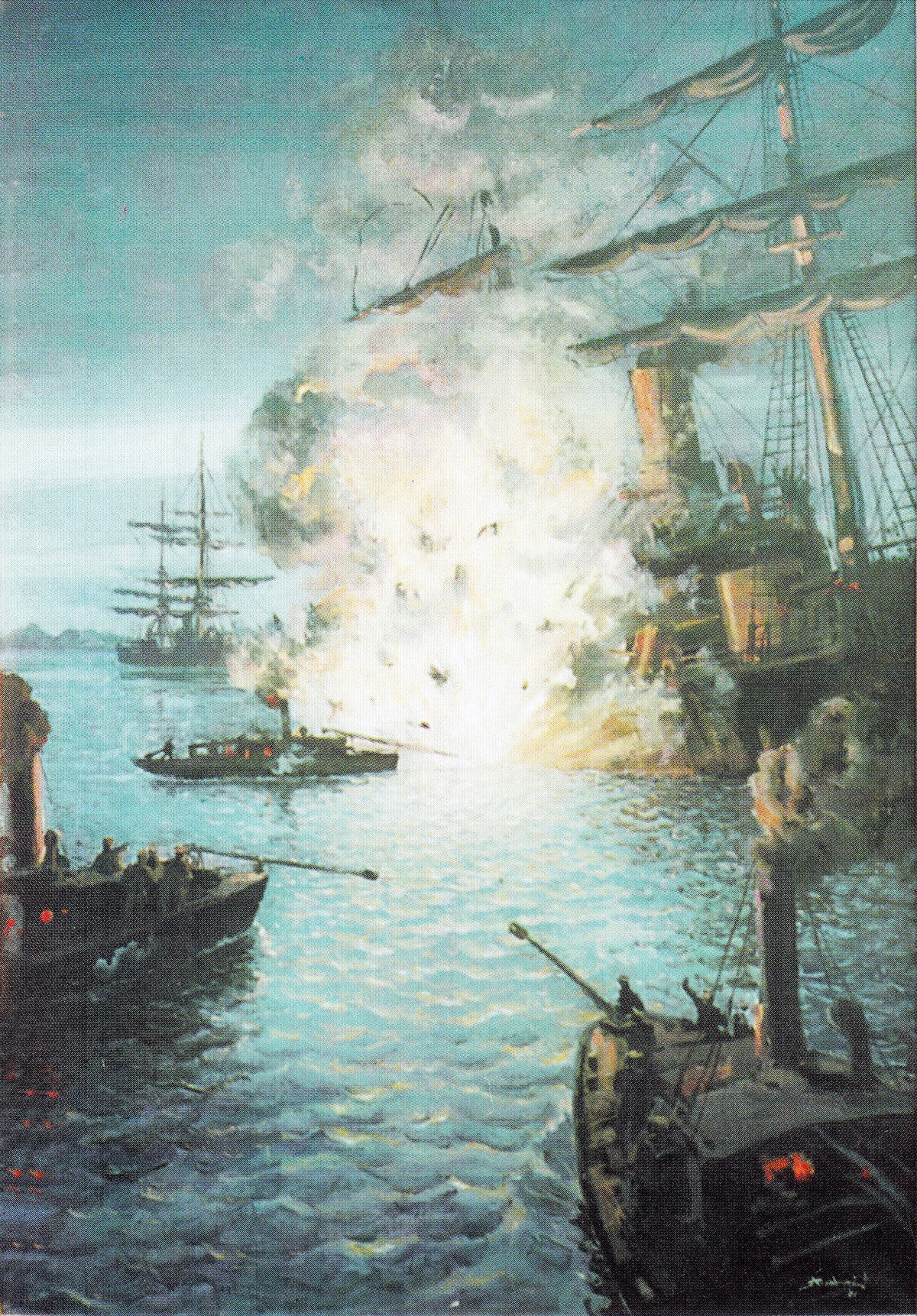
Balkan Theatre
Măcin, RomaniaAt the start of the war, Russia and Romania destroyed all vessels along the Danube and mined the river, thus ensuring that Russian forces could cross the Danube at any point without resistance from the Ottoman Navy. The Ottoman command did not appreciate the significance of the Russians' actions. In June, a small Russian unit crossed the Danube close to the delta, at Galați, and marched towards Ruschuk (today Ruse). This made the Ottomans even more confident that the big Russian force would come right through the middle of the Ottoman stronghold.
On 25–26 May, a Romanian torpedo boat with a mixed Romanian-Russian crew attacked and sank an Ottoman monitor on the Danube. Under the direct command of Major-General Mikhail Ivanovich Dragomirov, on the night of 27/28 June 1877 (NS) the Russians constructed a pontoon bridge across the Danube at Svishtov. After a short battle in which the Russians suffered 812 killed and wounded,[25] the Russians secured the opposing bank and drove off the Ottoman infantry brigade defending Svishtov. At this point the Russian force was divided into three parts: the Eastern Detachment under the command of Tsarevich Alexander Alexandrovich, the future Tsar Alexander III of Russia, assigned to capture the fortress of Ruschuk and cover the army's eastern flank; the Western Detachment, to capture the fortress of Nikopol, Bulgaria and cover the army's western flank; and the Advance Detachment under Count Joseph Vladimirovich Gourko, which was assigned to quickly move via Veliko Tarnovo and penetrate the Balkan Mountains, the most significant barrier between the Danube and Constantinople.
Responding to the Russian crossing of the Danube, the Ottoman high command in Constantinople ordered Osman Nuri Paşa to advance east from Vidin and occupy the fortress of Nikopol, just west of the Russian crossing. On his way to Nikopol, Osman Pasha learned that the Russians had already captured the fortress and so moved to the crossroads town of Plevna (now known as Pleven), which he occupied with a force of approximately 15,000 on 19 July.[26] The Russians, approximately 9,000 under the command of General Schilder-Schuldner, reached Plevna early in the morning. Thus began the Siege of Plevna.
